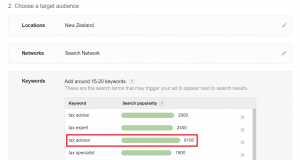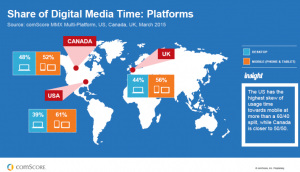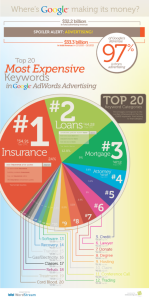— April 26, 2019
Planning your product roadmap? You should know these six key terms before putting pencil to paper.
What is Product Planning?
Product planning is the process of mapping out a product from idea to launch. It encompasses all of the steps and tasks that product managers take to make sure that a product is successful once it’s on the market.
Product planning isn’t just a one-and-done type of activity. For product managers, product planning is part of their day-to-day and should be thought of as an ongoing strategy.
From deciding on what kind of features your product will have, to setting achievable target revenue goals, product planning takes into account all internal decisions that go into making a product that will keep your customers satisfied. In order to make sure the process goes smoothly, it’s important to have an understanding of certain common product planning terms your peers in the SaaS industry are using.
What is a Product Management Roadmap?
Product management roadmaps provide PM teams with a visual guide that clearly demonstrates the vision and direction of a product from start to finish. A product roadmap will help you define what makes your product “successful.”
Product management roadmaps help to keep product development on track. Their goals typically include:
- Providing an overall strategy guide
- Outlining the product’s vision and philosophy
- Communicating timeline and goals to outside stakeholders
- Keeping production teams in alignment
Once your product is launched, the product roadmap is used to plan out future feature releases and updates. This type of ongoing product management roadmap needs to incorporate product analytics and should be aligned with your overarching business needs.
What is an Agile Product Roadmap?
An agile product roadmap is a flexible method of product development that focuses on short-term sprints to achieve greater goals. A common practice in the product management industry, agile product roadmaps keep teams on the same page in regards to the vision and goals for a product. However, agile product roadmaps tend to focus more on short-term procedures and are more flexible than the traditional product roadmap.
Agile product roadmaps are especially useful to Product teams because they respond well to shifts in business strategies. However, there can be downsides. It can be tempting to incorporate every piece of customer feedback or internal feedback you get, so if you’re not adhering to a consistent overall product roadmap you can easily lose the original purpose of the product amidst all the pivoting.
What is an Information Technology (IT) Roadmap?
An IT roadmap provides internal teams with tasks that need to be done on the back-end to launch a successful product. The IT roadmap is the yin to the product roadmap’s yang, typically involving technological activities such as updating software or migrating sensitive data.
While a company’s IT roadmap may share similarities with their product roadmap, there are distinct advantages to having a roadmap dedicated solely to internal technology processes. By giving internal teams a dedicated strategic roadmap, they are able to build a foundation on the back-end of your product to ensure it operates smoothly and efficiently. The last thing you want is to launch a buggy product!
What is a Technical Roadmap?
Used interchangeably with the term IT roadmap, a technical roadmap provides a visual guide for the strategy of technological developments in a business. Technical roadmaps highlight the current technology available within the company as well as any improvements or updates that can be made in the future. By using a technical roadmap, IT teams can outline their implementation plans, track progress, and measure results.
What are Product Roadmap Tools?
Product roadmap tools help Product teams develop and track the progress of their product roadmap initiatives. These can range from a basic kanban board made of post-it notes to a web-based solution. A product analytics tool that collects user activity and customer feedback is also a critical product roadmap tool.
Product roadmap tools also provide insight for other departments so they can better understand the product creation and iteration process.
What is Feature Planning?
Feature planning is the process followed to develop each feature in your greater product. A common workflow is comprised of the following steps:
- Selecting the new feature: Everybody wants something out of your product. Your customers, your Sales team, your Marketing team, your stakeholders—the list goes on. When it’s time to choose the next feature on your roadmap, base your decision on data, not the loudest voice in the room.
- Setup: During setup, Product teams will make sure that everything is ready to get started. This usually includes product folders, spec files, and project outlines.
- Prototyping: Once a features specs are planned out, it’s time to start designing version one of the feature.
- Feedback: Once your prototype is complete, it’s important to get an outsider’s feedback on it. Feedback should be a part of each step of the process.
- Asset Creation: Once a version has been agreed upon, you’re ready to make them fit for implementation.
- Release: Once your feature is ready to be released, coordinate with your marketing and IT teams to make implementation as smooth as possible.
Features are the key components that give products their value and differentiates them from their competitors. Feature planning will happen throughout the life of your product, so it’s crucial that you have a framework that
Go forth and build plan awesome projects
There are so many products in the market today, it’s more important than ever that yours stands out. To do this, you must deliver a great product experience and value that can’t be found anywhere else. It’s a tall order to fill, but if you always keep your customer at the forefront of your product planning, you’re already ahead of the game.
Gainsight PX gives you insights to plan and build products your customers love. Sign up for a demo today to see our powerful and complete product experience platform in action.
Business & Finance Articles on Business 2 Community
(46)






